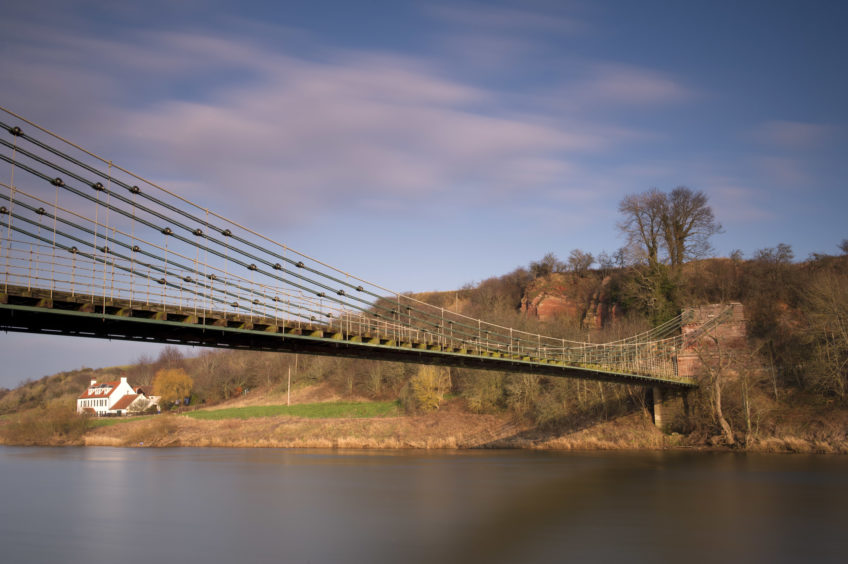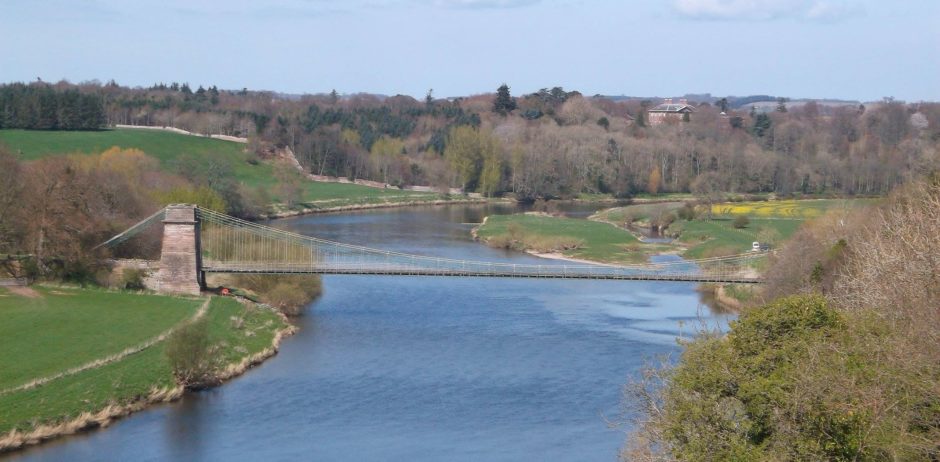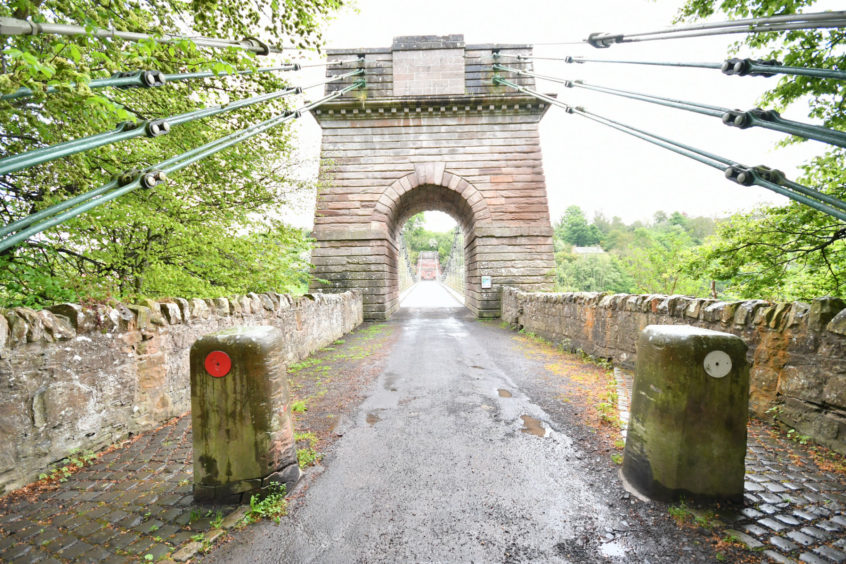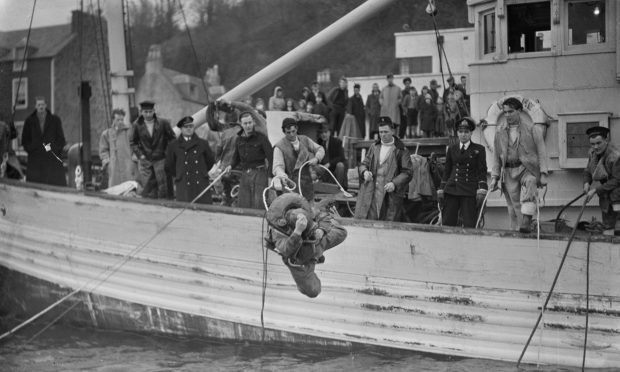Union Chain Bridge: Oldest traffic carrying suspension bridge in world linking Scotland and England turns 200 years old
The oldest traffic carrying chain suspension bridge in the world celebrates its 200th anniversary today.
But plans to celebrate the iconic Union Chain Bridge’s bicentenary on 26 July have been cancelled in the wake of coronavirus, leaving the local communities of north Northumberland and Berwickshire – which the bridge links – without any physical events to mark the milestone.
The celebrations included the awarding of a prestigious plaque, naming the bridge an International Historic Civil Engineering Landmark, by the presidents of the American and Japanese Societies of Civil Engineers and the UK Institution of Civil Engineers.
The accolade is only held by about 50 landmarks worldwide, including the Forth Bridge, the Eiffel Tower, the bridges at Sydney Harbour, and the Golden Gate Bridge.
 © Stuart Cobbley
© Stuart Cobbley“The celebrations were going to be big, because the bicentenary of the oldest road suspension bridge in the world is quite an event, and one that ought to have been marked in a big way,” said Friends of the Union Chain Bridge secretary Edward Cawthorn.
“It is a shame they had to be cancelled. Obviously in the great scheme of things there are more important things than the abandonment of celebrations, but we were upset that it had to happen.”
The plaque will now be presented to the Union Bridge – which was the first of its kind to be constructed in 1820 – when its long-awaited restoration work is completed in 2021, after beginning in August.
Following serious concerns about the bridge’s structure, it received £3.14 million from The National Lottery Heritage Fund in September 2019 after a successful bid was put together by the councils either side of the border, Museums Northumberland and community group Friends of the Union Chain Bridge.
Northumberland Country Council and Scottish Borders Council have since put a collective £5.7 million towards the £10.5 million scheme.

“It’s a very big project, which involves the complete dismantling of the bridge, and the removal of all the chains, the hangers, the supporters, and the road way itself. It’s a complete restoration and there will be no sign of the bridge except from the two towers on the English and Scottish sides – it’s going to be very strange,” explained Cawthorn.
“It’s a great relief that the work is starting, as there have been times during the last five or six years that it looked like the plans would not succeed. The bridge was placed on the English Heritage at Risk Register and there was a danger that it would be closed to road traffic and restricted to pedestrian use.
“It was the perseverance of the councils, as well as the Friends, that led to the grant which really meant the restoration could go ahead,” he said.
On the works beginning next month, Scottish Borders Councillor, Gordon Edgar, said: “This is another hugely positive step forward for such an important project. We’re now looking forward to work starting as the next chapter in the Union Chain Bridge’s unique history gets underway.”
 © Allan Waffles
© Allan WafflesThe bridge has been restored several times during its lifetime, but Cawthorn said there has never been a project like this one.
The last major restoration was completed back in 1903, when cables were added to strengthen the chains. It has since been discovered that they do not assist in stabilising the bridge at all, and they are now being removed as part of the new works, restoring the bridge to its original state.
The project, expected to be completed in November 2021 if all goes to plan, means local people will face a 22-mile return trip to get from one side to the other when the bridge is not there. Yet, Cawthorn said the communities are “fully supportive” of the restoration.
“The community is very proud of the bridge and it’s a much-loved local feature,” he said. “It was built as an essential way to take lime and coal into Berwickshire from Northumberland. Now, it’s a vital link between the communities and is used daily by a large number of local residents, school trips, and tradesmen.
“There were a few community events planned to celebrate the bicentenary, with the main one being at Paxton House, near where the bridge sits. Concerto Caledonia were to present a concert based on early 19th century Scottish music, with a grand finale ceilidh to round off the celebrations.”

Before Covid-19 struck, speakers were scheduled to fly in from the United States, Japan and Norway on the anniversary to give talks on the way the structure, built by Captain Samuel Brown, has influenced suspension bridge designs over the past two centuries.
Cawthorn said: “Samuel Brown was a pioneer in chain development. He developed chains for Royal Navy ships to replace the old hemp anchor ropes, then developed his design for not only bridges but for chain piers – he built one in Newhaven in Edinburgh and he built the Brighton Chain Pier. Both were destroyed by storms in the late 19th century.
“The Union Chain Bridge was the first of its kind, along with the Menai suspension bridge in North Wales, which was started slightly before the Union Bridge but was completed later in 1826. That meant that the Union Bridge was the oldest.”
Virtual celebrations to commemorate the anniversary will take place instead on 26 July, with a range of online activities celebrating the history and heritage of the structure, including the premiere of a specially commissioned film.
And, there is something else to celebrate as the bridge was awarded a Guinness World Record in June, and is now officially the world’s oldest road suspension bridge still carrying vehicular traffic. Cawthorn said it was a “proud moment”.
He said: “We always knew it was the oldest, but it’s nice to have it officially recognised. It’s another feather in the bridge’s cap.”

Enjoy the convenience of having The Sunday Post delivered as a digital ePaper straight to your smartphone, tablet or computer.
Subscribe for only £5.49 a month and enjoy all the benefits of the printed paper as a digital replica.
Subscribe





















